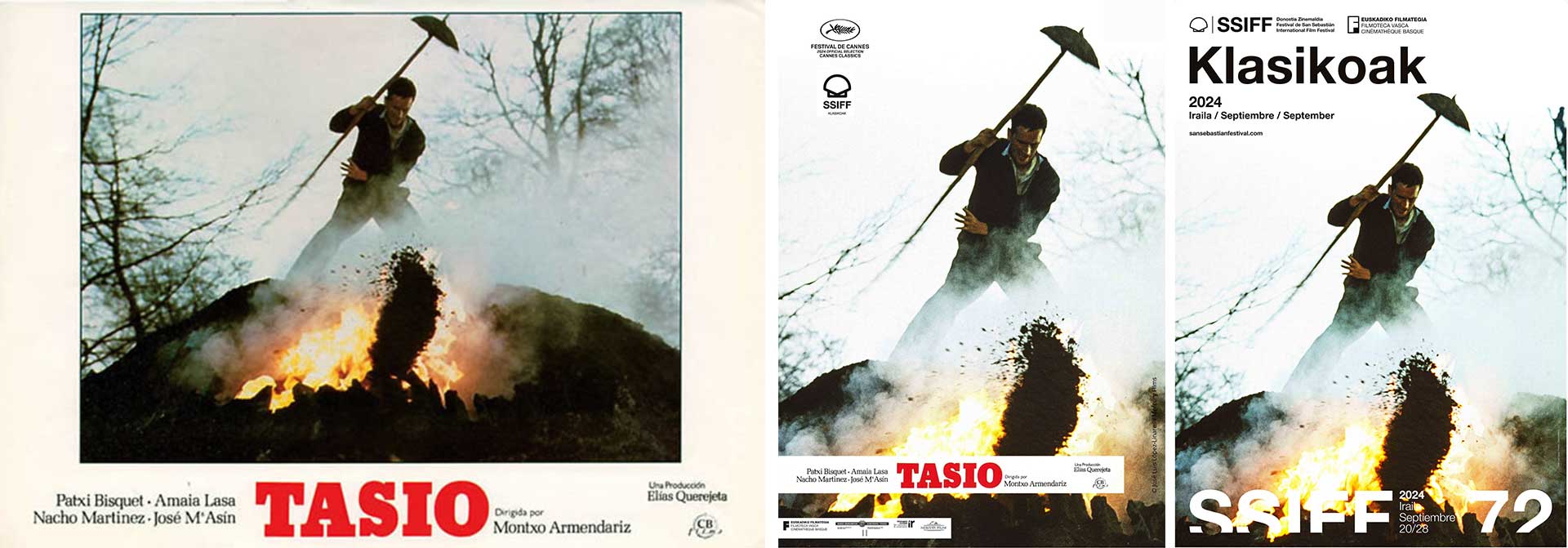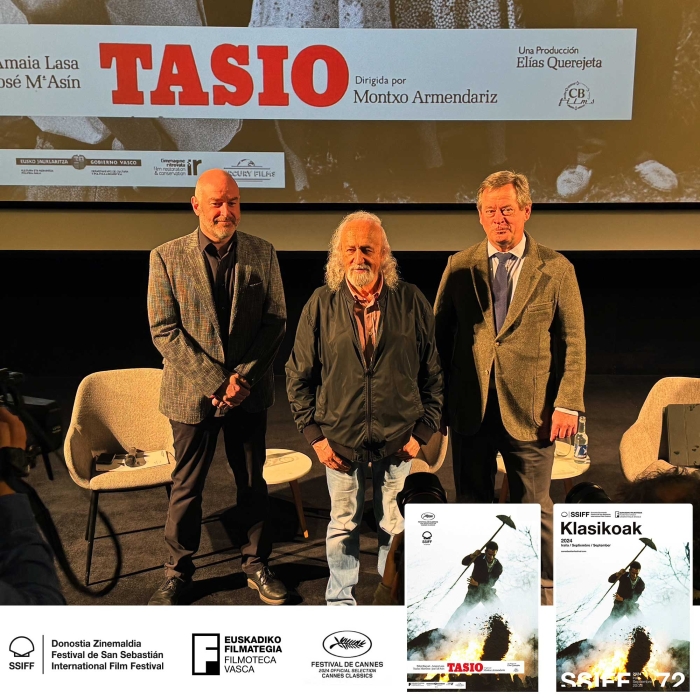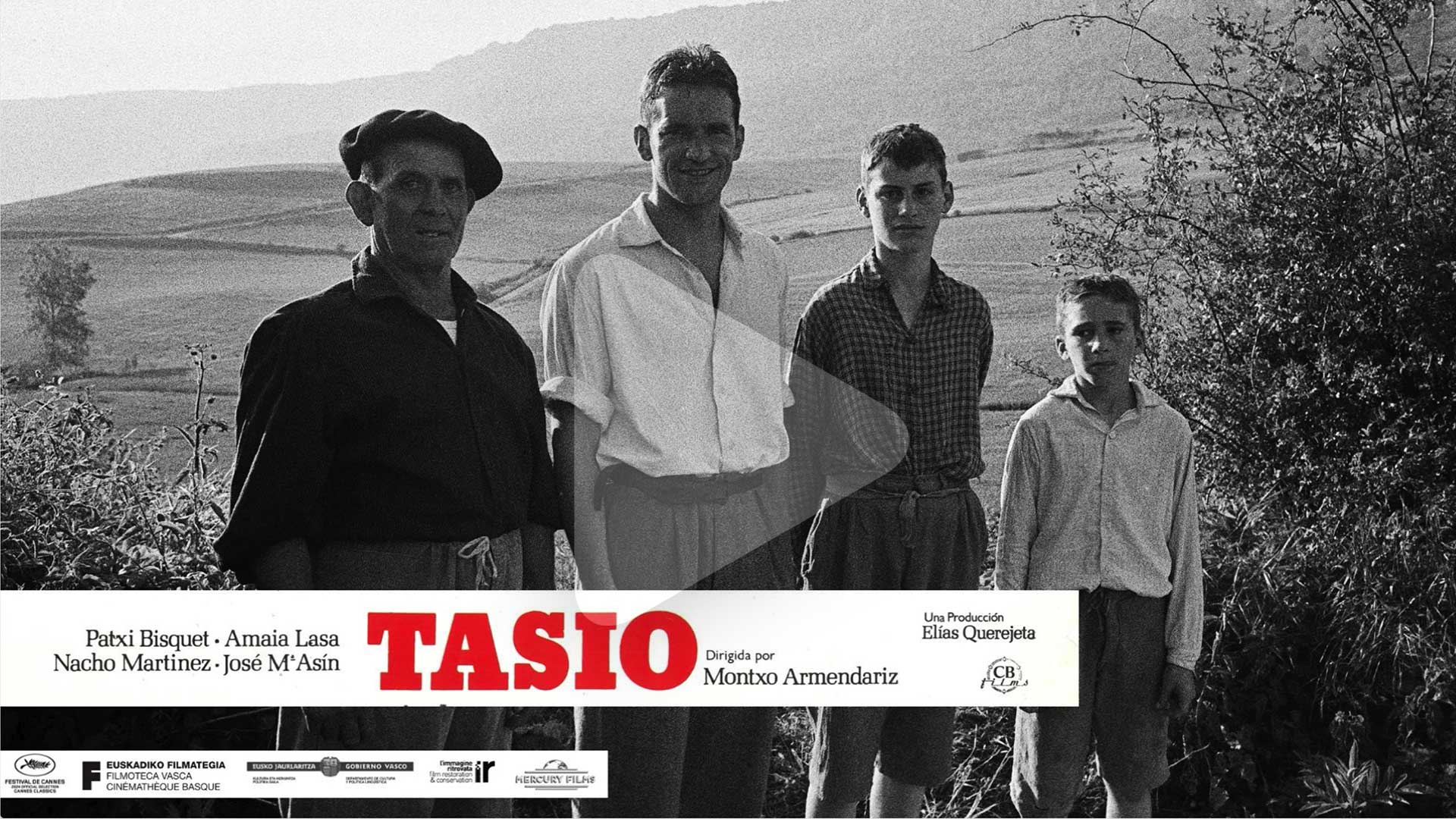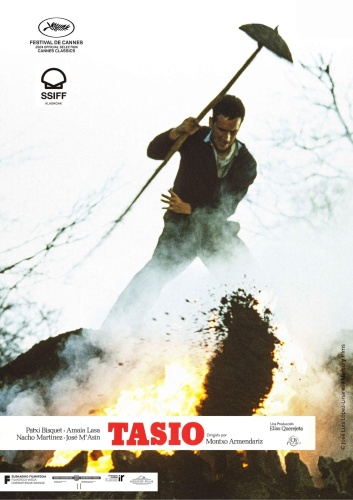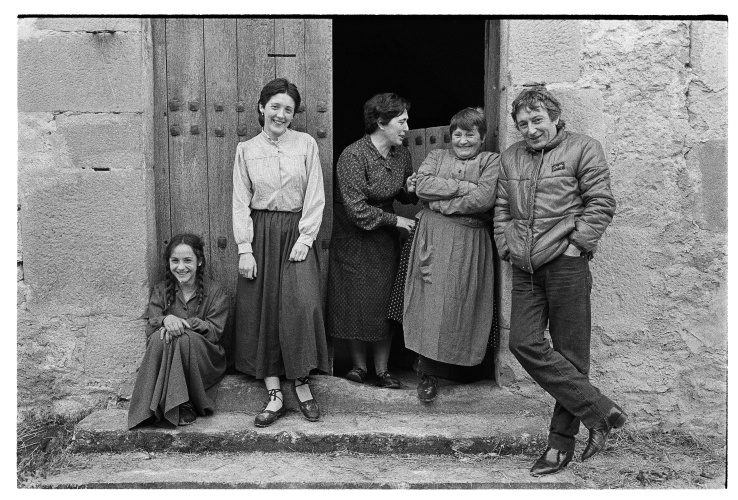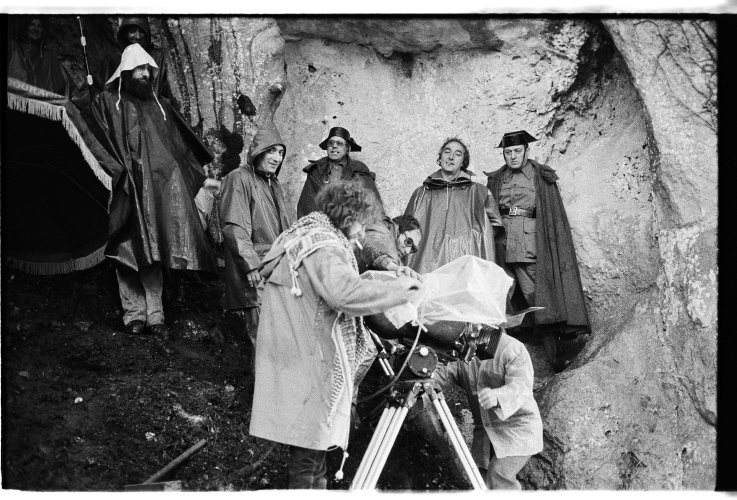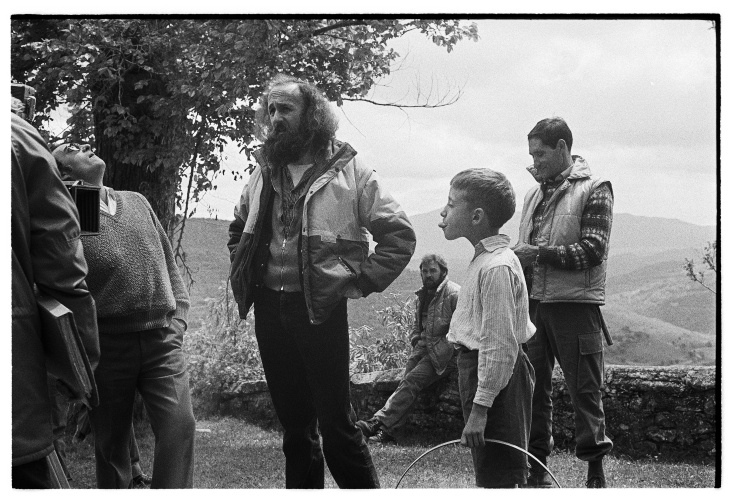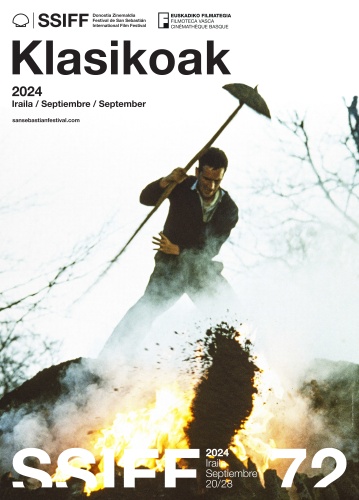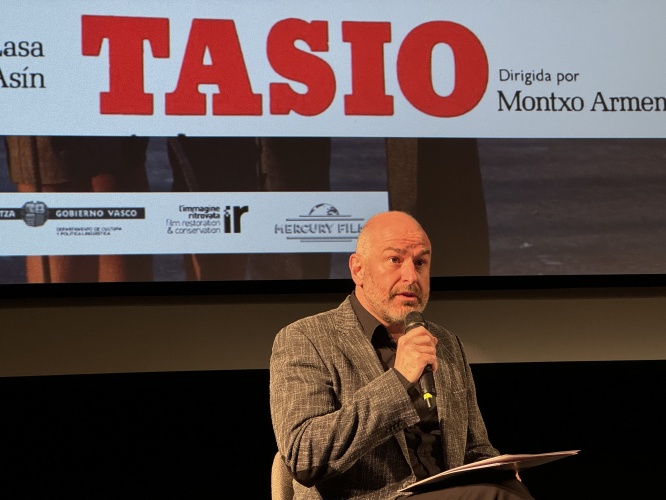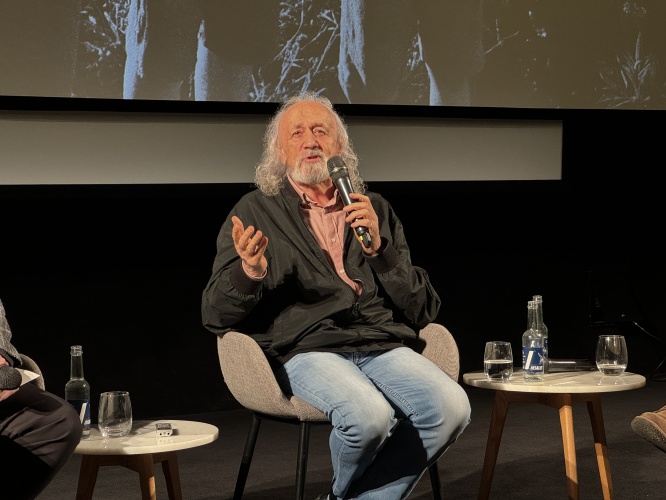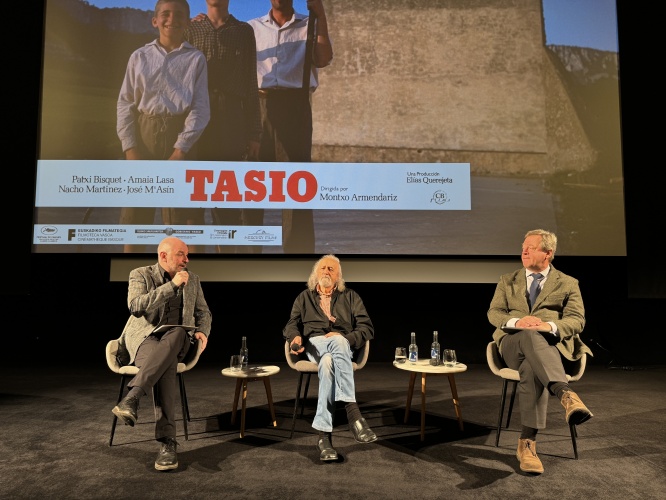The film Tasio (Montxo Armendáriz, 1984) was restored by the Basque Film Archive at the Bologna Cineteca's L'immagine Ritrovata laboratories in October and November 2023. Furthermore, this enormously important work of the Basque film world has been selected for the Classics section of the Festival de Cannes, to run from 14-25 May, where it will show in 4K definition. In September, the same restored print of Tasio will open the Klasikoak section at the 72nd edition of the San Sebastian Festival, where it premiered in the Official Selection 40 years ago.
The original material, archived at the Filmoteca Española, made its way to the laboratories in late September. Once in Bologna, it was manually revised and repaired followed by cleaning with ultrasound techniques. After scanning, it was digitally restored, stabilising the image, repairing scratches and removing dirt. Finally, the colour grading was applied, and the sound restored, all supervised in the Italian city by Armendáriz himself. The entire process during this period of time in Bologna was similarly controlled by the director from Navarre together with technical staff from the Basque Film Archive.
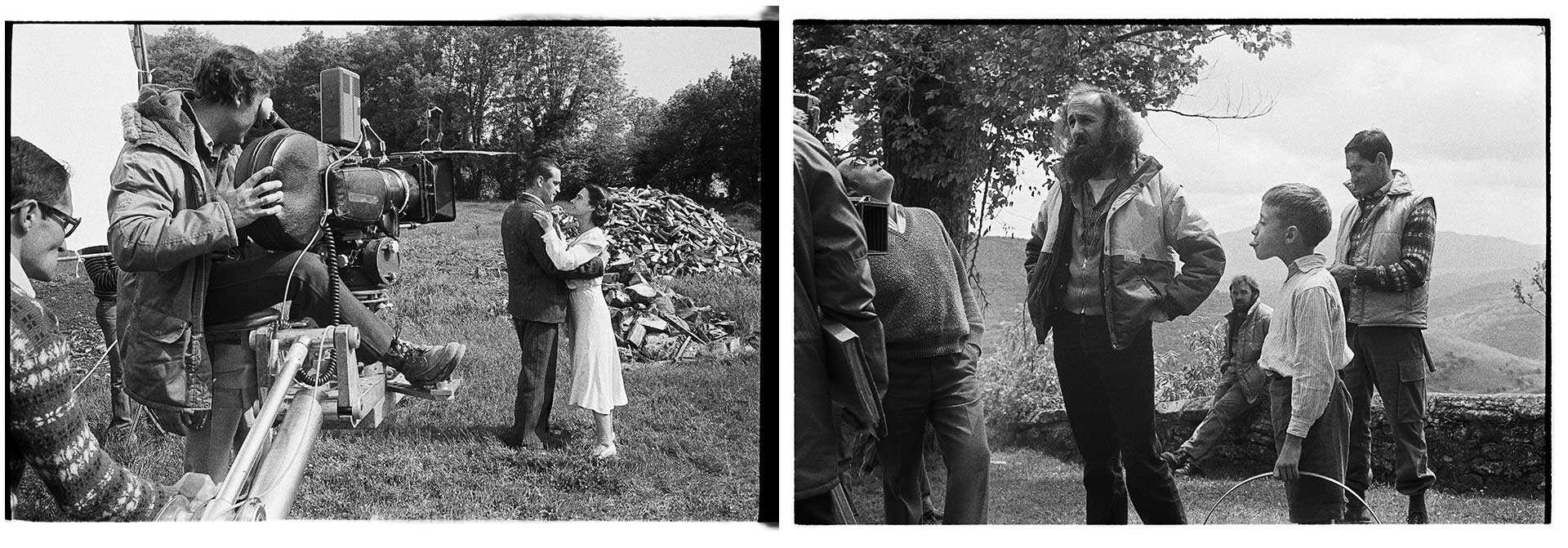
The restoration was possible thanks to the financial backing of the Basque Government Department of Culture and Language Policy and was carried out with the approval of Enrique Cerezo P.C., owner of the reel.
Tasio has been selected for Cannes Classics, the section of the French festival which retrieves classic titles and is one of the world's biggest in the field, alongside films such as Napoleon (Abel Gance, 1927), Gilda (Charles Vidor, 1946), Paris, Texas (Wim Wenders, 1984), Seven Samurai (Akira Kurosawa, 1954), Les Parapluiea de Cherbourg / The Umbrellas of Cherbourg (Jacques Demy, 1964), The Sugarland Express (Steven Spielberg, 1974) and Quatre nuits d'un rêveur / Four Nights of a Dreamer (Robert Bresson, 1971).
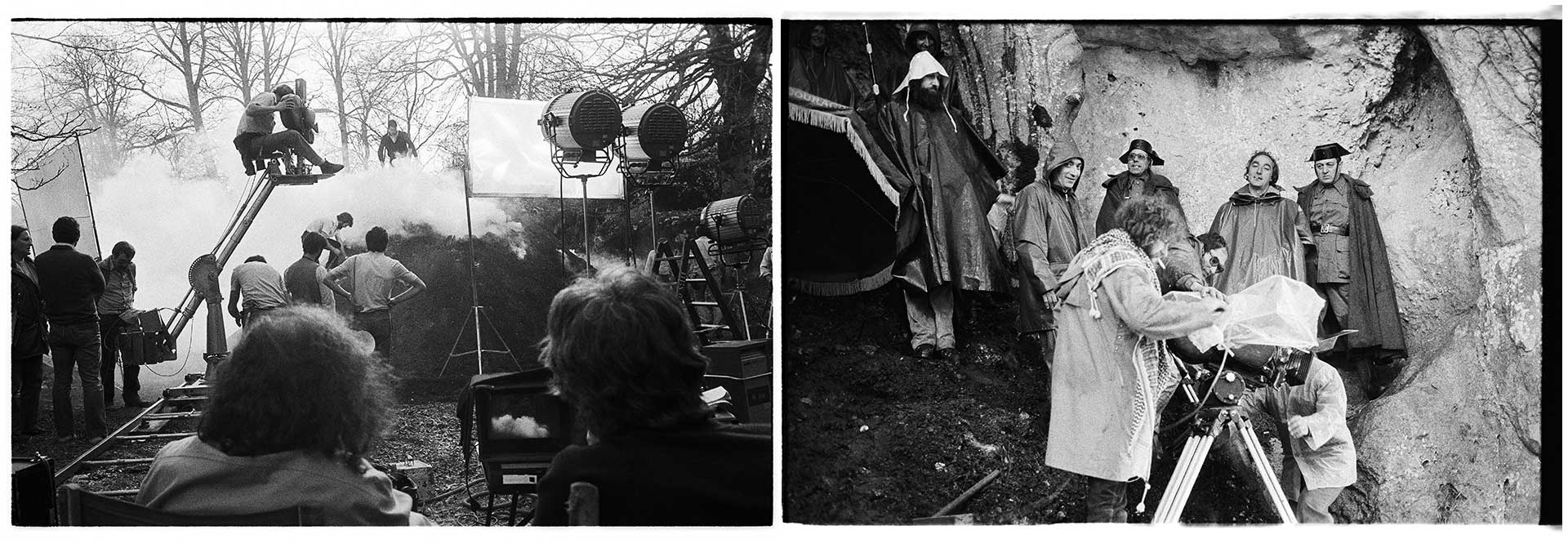
The Basque Fim Archive will endeavour to take this iconic Basque film screen to other key events dedicated to classic movies. In September it can be seen at the San Sebastian Festival, where it will open Klasikoak, the section responsible for retrieving classics old and new from universal film history.
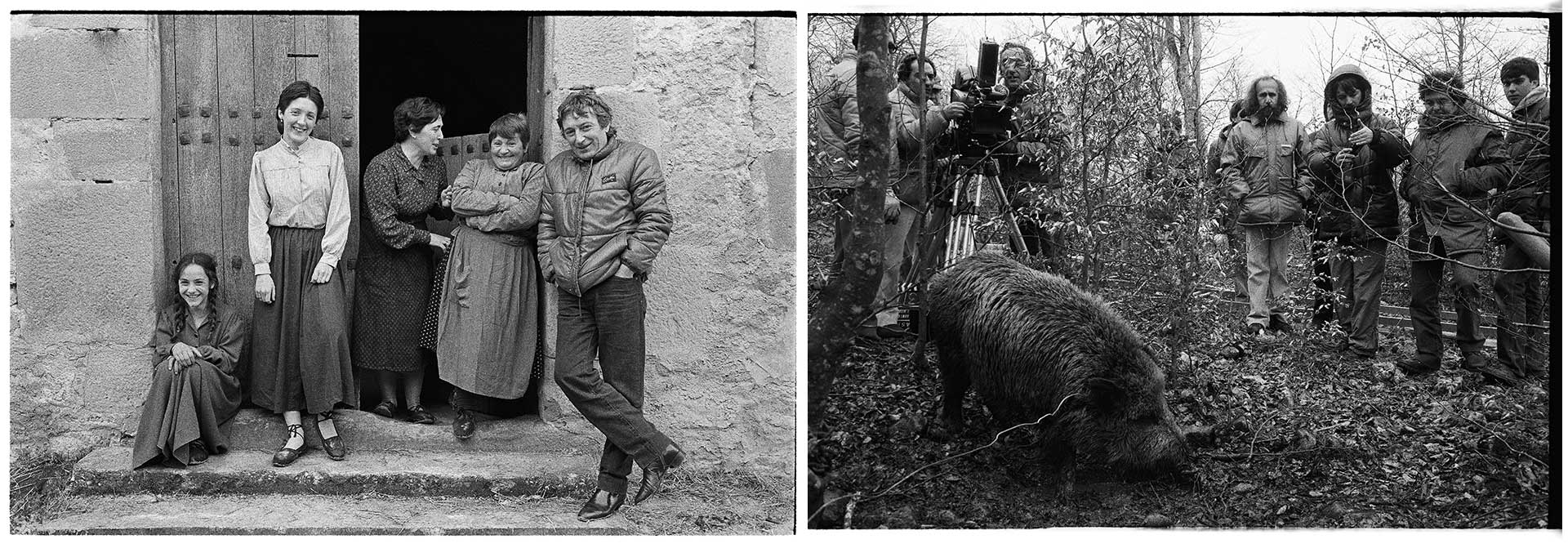
For its part, the French distribution company Tamasa has purchased the rights to screen the film in cinemas throughout France in 2025.
'TASIO'
The film follows the life of Tasio, a boy from a small town in the Lokiz mountain range (Navarre) who starts working in the hills at the age of 8 and has become a charcoal maker like his father by the age of 14. While many of the locals are moving to the city in search of regular work, Tasio prefers to keep his freedom and live in the hills. The film is based on the life of Anastasio Ochoa Ruiz (Tasio), a charcoal maker and poacher born in Zúñiga in 1916 who died in 1989 on mount Valderrota.
The film boasted an excellent technical and artistic cast featuring Elías Querejeta (producer), Pablo G. del Amo (editor), Gerardo Vera (art director), Ángel Illarramendi (composer), José Luis Alcaine (cinematographer), Alfredo Mayo (cameraman) and José Luis López-Linares (still photography) with Patxi Bisquert and Amaia Lasa in the starring roles.
In the words of Montxo Armendáriz, "Tasio is a film about furtive freedom, about the hidden freedom at odds with norms and conventions". "What interested me most about Tasio was the concept of dignity, pride and honour he upheld against society, even if the stance could make him seem somewhat backwards and not in favour of progress. That said, today I feel it reads differently to when I made it", adds the filmmaker.
Referring to his stay in Bologna, Armendáriz says that, on entering the lab room where they were restoring Tasio and seeing a frozen image of the still featuring the title of the film on screen, he "felt the same thrill as he had on the day of its premiere". "The satisfaction of seeing a dream come true. Not only because the images as I remembered them were being rescued from the photochemistry process, but also because with them I recovered pieces of my own life: unforgettable moments and people I love who, with their lights and shadows, gradually made their apprearance as I watched each scene, as though the memories had been trapped in its frames and refused to be erased with the passing of time", he explains.
For his part, the director of the Basque Film Archive, Joxean Fernández, said that Tasio marks the beginning of "our project to restore key Basque films. We have also done it in what is perhaps the world's leading laboratory (Bologna) with the aim of internationally introducing the concept of 'classic' for our films. Having enjoyed the work and complicity of Montxo Armendáriz throughout the process lends this work unquestionable legitimacy. At the end of the day, we have the best restoration of one of our best titles in the best showcase: Cannes".
The Basque Government's Counselor of Culture and Language Policy, Bingen Zupiria, stated that "seeing Tasio in Cannes is great news as it helps Basque culture to gain international presence. By incorporating this film into current technologies, we are making our heritage available to society. The cultural heritage of a people must be preserved and shared to ensure that it is passed to future generations. This is what we wanted to do with Tasio. Restore it, adapt it to today's needs and make it available to the people. it is a beg deal to be shown in the Classics section and Cannes and to receive the international recognition it deserves". The Counselor also thanked the work of the Basque Film Archive for its efforts to renovate and care for films that are part of the history of Basque cinema.
MONTXO ARMENDÁRIZ (OLLETA, NAVARRE, 1949)
From the age of thirteen Montxo Armendáriz (Olleta, Navarra, 1949) knew that he wanted to make films; however, he went on to study electronics, and his first professional job was teaching that subject. Self-taught, in 1977, thanks to the Basque Filmmakers' Association, he met Fernando Larruquert and Javier Aguirresarobe. The former was the editor and the latter the cinematographer on the moviemaker's first short film, La danza de lo gracioso (Barregarriaren dantza), which won that year's Silver Mikeldi at the Bilbao International Short Film Festival. He later bagged numerous other awards thanks to works such as: Ikusmena (1980), Ikuska 12 (1981), Carborneros de Navarra (1981), Tasio (1984), second prize in the Official Selection and FIPRESCI Award at the San Sebastian Festival; 27 horas / 27 Hours (1986), Silver Shell for Best Director at the San Sebastian Festival; Las cartas de Alou (1990), Silver Shell and FIPRESCI Award at the San Sebastian Festival; Historias del Kronen (1995), Official Selection at the Festival de Cannes and Goya for Best Adapted Screenplay; Secretos del corazón / Secrets of the Heart (1997), Blue Angel Award for Best European Film at the Berlinale and Oscar candidate for Best Foreign Language Film; Silencio roto / Broken Silence (2001), Escenario móvil / Travellng Stage (2003), Obaba (2004), opening film of the 53rd San Sebastian Festival; and No tengas miedo / Don't be afraid (2011).
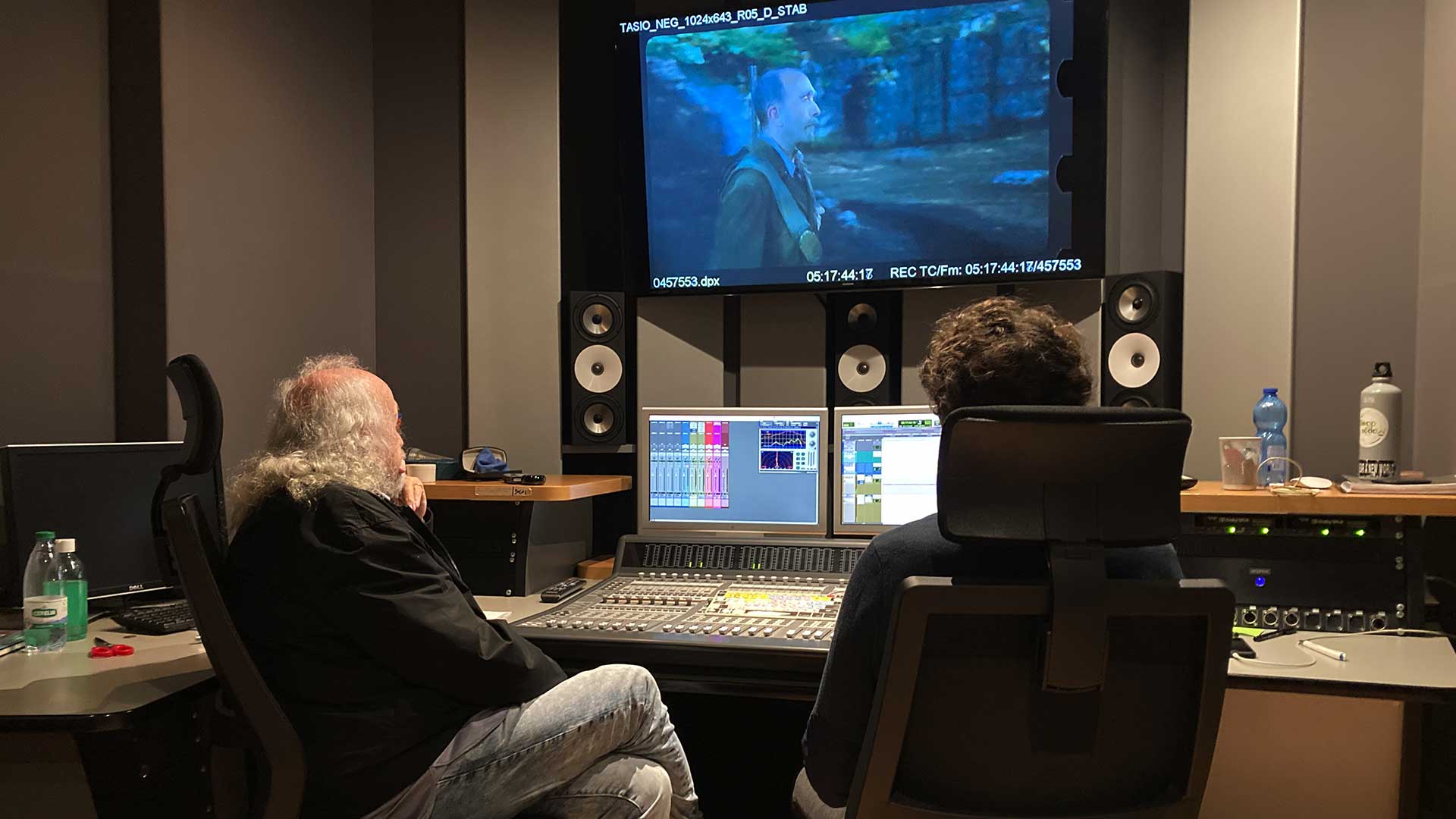
Klasikoak, a festival of classical movies extended over time and space
In 2024, the San Sebastian Festival and the Basque Film Archive have united three already existing programmes under the catch-all title of Klasikoak: the season organised by the Basque Film Archive from April to June with the Institut Lumière, the Festival's classic retrospective, this year dedicated to Italian Crime Films, and its Klasikoak section, which screens classics old and new and will open this year with the restored copy of Tasio.
Thus, the Klasikoak initiative, coming with more than 120 screenings this year, takes the shape of a classic movie festival extended over time, from April to September, and space, given that the films proposed by the Basque Film Archive a for its spring season are now running in Vitoria-Gasteiz, Bilbao, San Sebastian, Pamplona and Saint-Jean-de-Luz.
